First Look: Windows Server 2008
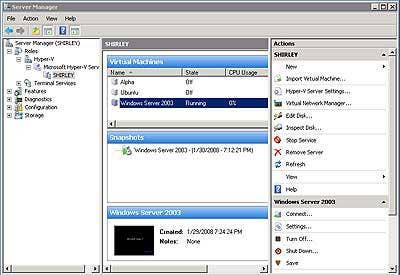
Windows Server 2008's Server Manager can open active role server consoles and provides a complete view into physical devices, storage, services and many other features in the OS. This is the place to get a quick status on all active roles and services.
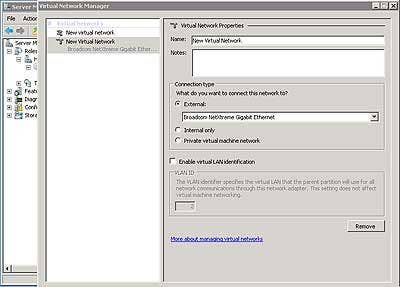
Hyper-V's Virtual Network Manager supports external, private and VPN networks, including VLAN topologies. Hyper-V automatically binds adapters to virtual switches. During the binding process, virtual switches assume control of a NIC while turning off network adapters. Test Center found a bug in Hyper-V beta during this process. Hyper-V failed to bind to an active adapter on a server when selecting external network connection.
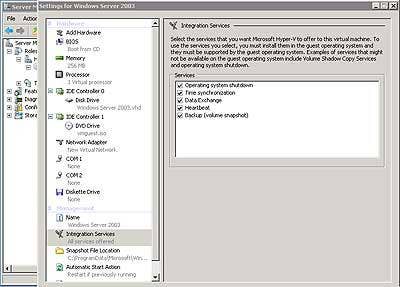
Windows Server 2003 virtual machine requires service pack 2 for Hyper-V's guest components to install and work correctly. Guest components, also known as Integration Services, provide Windows 2003 and other operating systems with key services such as virtual network and virtual I/O drivers, shut down through Hyper-V and snapshots.
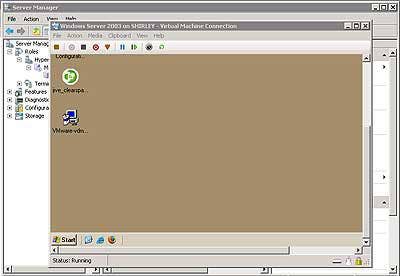
Hyper-V's VM console has quick buttons to change the state of virtual OSes. Through the console, users are able to install Integration Services and pass any data to a VM copied on a clipboard. CMP Test Center recommends dropping the resolution in the virtual OS well below the parent OS.
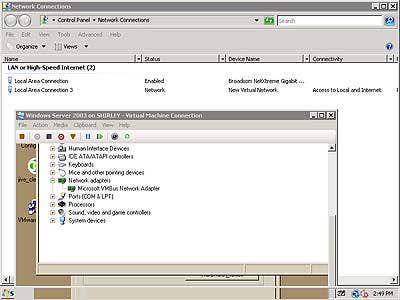
Verifying Integration Services through a virtual Windows Server 2003 Device Manager is the best way to know if services installed correctly. Here, one can see how a virtual switch adapter links a NIC to a virtual network adapter in the VM.
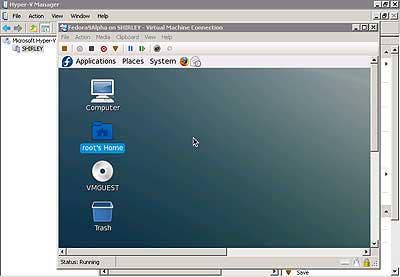
Hyper-V uses a catch all legacy device driver for unsupported OSes. The Test Center was able to network Fedora 6 Alpha, Ubuntu and Vista VMs. To get networking going, simply go to a VM Settings and delete the default virtual network adapter and install a new one by adding a Legacy Network Adapter as new hardware. Make sure that the legacy adapter points to the virtual adapter in Virtual Network Manager. Once a legacy network adapter is installed, the OS will have network service support. On Linux, users need to take an extra step and configure the network device.
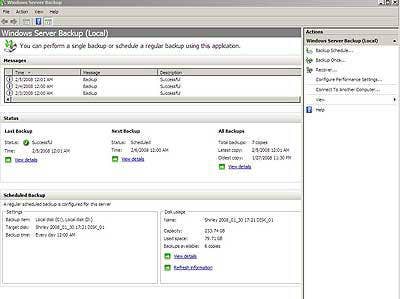
Once the server, and all of its features and roles and virtual machines, have been installed and configured, administrators now have the option of simple backup to a NAS device through the Windows Backup feature. Wizard-driven, the entire process of setting scheduled backups becomes automated.